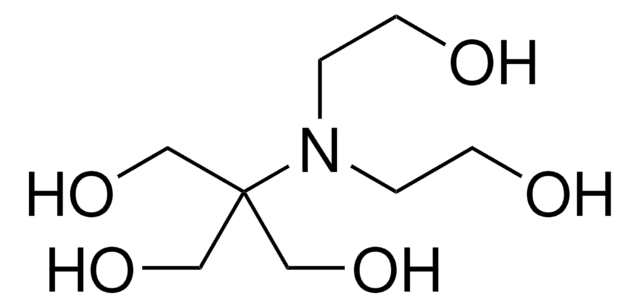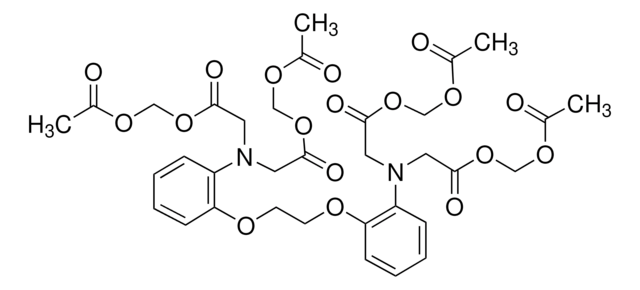Q2128
Quisqualic acid
powder
Synonym(s):
β-(3,5-Dioxo-1,2,4-oxadiazolidin-2-yl)-L-alanine, 3-(3,5-Dioxo-1,2,4-oxadiazolidin-2-yl)-L-alanine
About This Item
Recommended Products
form
powder
Quality Level
color
white to off-white
solubility
ethanol: <0.17 mg/mL
H2O: 0.5 mg/mL
0.1 M HCl: 1.4 mg/mL
1 M NH4OH: 20 mg/mL
organic solvents: insoluble
storage temp.
2-8°C
SMILES string
N[C@@H](CN1OC(=O)NC1=O)C(O)=O
InChI
1S/C5H7N3O5/c6-2(3(9)10)1-8-4(11)7-5(12)13-8/h2H,1,6H2,(H,9,10)(H,7,11,12)/t2-/m0/s1
InChI key
ASNFTDCKZKHJSW-REOHCLBHSA-N
Gene Information
rat ... Gria1(50592) , Grik1(29559) , Grin2a(24409) , Grm1(24414) , Grm2(24415) , Grm4(24417) , Grm5(24418)
Looking for similar products? Visit Product Comparison Guide
General description
Application
Biochem/physiol Actions
Storage Class
11 - Combustible Solids
wgk_germany
WGK 3
flash_point_f
Not applicable
flash_point_c
Not applicable
ppe
dust mask type N95 (US), Eyeshields, Gloves
Choose from one of the most recent versions:
Already Own This Product?
Find documentation for the products that you have recently purchased in the Document Library.
Our team of scientists has experience in all areas of research including Life Science, Material Science, Chemical Synthesis, Chromatography, Analytical and many others.
Contact Technical Service








